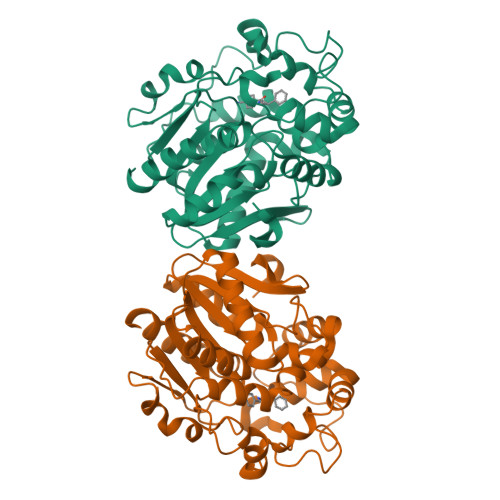A practical use of ligand efficiency indices out of the fragment-based approach: ligand efficiency-guided lead identification of soluble epoxide hydrolase inhibitors
Tanaka, D., Tsuda, Y., Shiyama, T., Nishimura, T., Chiyo, N., Tominaga, Y., Sawada, N., Mimoto, T., Kusunose, N.(2011) J Med Chem 54: 851-857
- PubMed: 21192659
- DOI: https://doi.org/10.1021/jm101273e
- Primary Citation of Related Structures:
3ANS, 3ANT - PubMed Abstract:
Ligand efficiency is frequently used to evaluate fragment compounds in fragment-based drug discovery. We applied ligand efficiency indices in a conventional virtual screening-initiated lead generation study of soluble epoxide hydrolase inhibitors. From a considerable number of screening hits, we carefully selected a compound exhibiting relatively weak inhibitory activity but high ligand efficiency. This ligand efficiency-guided selection could reveal compounds possessing preferable lead-like characteristics in terms of molecular size and lipophilicity. The following hit-to-lead medicinal chemistry campaign successfully led to a more potent, ADMET-clean, lead-like compound preserving high ligand efficiency. Retrospective analyses, including consideration of the more recently proposed indices of ligand efficiency, shed light on the validity of our hit triage and hit-to-lead studies. The present work proposes a practical methodology for lead generation using the concept of ligand efficiency.
Organizational Affiliation:
Chemistry Research Laboratories, Dainippon Sumitomo Pharma Co., Ltd. 3-1-98 Kasugade-naka, Konohana, Osaka 554-0022, Japan.



















